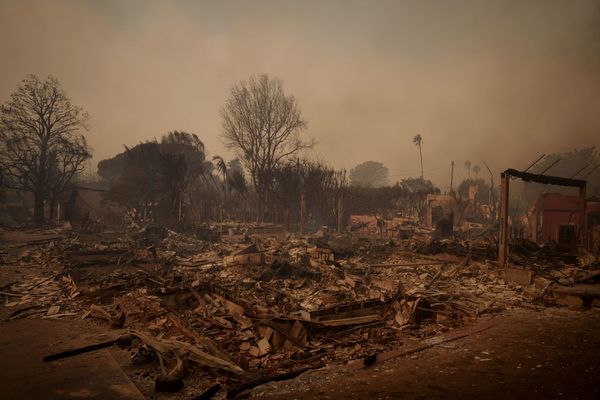As the U.S. government begins the final withdrawal of troops from Afghanistan, U.S. President Joe Biden has pledged that counterterrorism efforts as well as “diplomatic and humanitarian work will continue.” But it is unclear how the United States and the international community will make good on those promises. Although the Afghan government may be able to survive in the near term, the security situation is almost certain to deteriorate, limiting access for both military and humanitarian assistance. If the United States is to mount an effective counterterrorism effort and facilitate crucial humanitarian assistance from the United Nations, it must focus its diplomatic efforts on finding partners in the region. Those partners are in Central Asia.
In his announcement of the withdrawal, Biden promised the world: “We will not take our eye off the terrorist threat. The United States will reorganize our counterterrorism capabilities and assets in the region to prevent the reemergence of terrorist threat in Afghanistan.” The commander of U.S. Central Command, Gen. Kenneth McKenzie Jr., subsequently testified before Congress that over-the-horizon operations against terrorists would be “difficult.” In practice, to confront terrorist threats, the United States will need to position forces and/or intelligence assets near Afghanistan. Even without the permanent presence of U.S. combat troops in neighboring countries, access to those countries would be needed to train and coordinate with partner forces, including Afghan military units, that could conduct the operations themselves inside the country.
Amid the backdrop of civil war, the humanitarian crisis will also necessitate United Nations’ and international humanitarian nongovernmental organizations’ access to Afghanistan from neighboring countries. Afghanistan faces a significant drought, reducing access to food. The United Nations recently estimated more than 18 million people there—around half of the population—requires humanitarian assistance, which is double the 9 million people in need in 2017. It is therefore imperative the United Nations and international community not only plan to distribute aid during a possible civil war inside Afghanistan but also from neighboring countries should Afghanistan and the Taliban become inhospitable for aid organizations.
The establishment of safe zones for refugees is important not only for providing aid but also to protect the significant numbers of minorities likely to face persecution and ethnic cleansing at the hands of the Taliban. Refugees from the north and northeast as well as central Hazarajat are likely to flow toward Central Asia as ethnic Hazara, Uzbek, and Tajik Afghans are targeted by the Taliban. Engagement for sanctuary in Central Asia is thus critical to avert a human rights disaster.
As a landlocked country, access to Afghanistan for both military and humanitarian assistance is dependent on air- and ground-based logistical efforts. Today, most ground-based humanitarian assistance, food, fuel, and military supplies are delivered to ports in Pakistan and transported into Afghanistan through border crossings at Torkham and Spin Boldak—both areas contested, if not controlled, by the Taliban. Moreover, even under existing security capabilities, these convoys are continuously attacked by the Taliban and pillaged by thieves. Further deterioration of security conditions may make them untenable even if Pakistan is willing to facilitate increased aid. Iran is unlikely to cooperate with U.S. and U.N. attempts to deliver supplies, and China’s border with Afghanistan is so mountainous and undeveloped that delivering aid through China would be virtually impossible even if its relationship with Washington was not already at a nadir. Given that Iran, Pakistan, and China are unlikely to be willing or capable partners, that makes Uzbekistan and Tajikistan, perhaps supported by other Central Asian countries, the best regional partners to deliver aid and assistance.
There are complications to these possible partnerships. In 2012, Uzbekistan enacted a law banning foreign military bases in the country. But there are ways around these challenges. In Uzbekistan, Germany successfully maintained a military presence at the Termez airfield after the new law was enacted by labeling it a “transit hub,” implying it was not a foreign military installation. A new and small presence at an existing air base may not be considered a foreign military “base.” And the presence of intelligence personnel may not run afoul of the law at all.
Additionally, the law explicitly exempted a U.N. presence from the ban. With the infrastructure in place, including an airport, Termez could be an ideal location for an U.N.-supported refugee safe zone, where aid could be delivered and refugees safely resettled abroad.
Tajikistan, with its long border with Afghanistan and ethnic ties to around 25 percent of Afghanistan’s population, is also an attractive place from which to provide security and humanitarian assistance. Since France and NATO began using air bases in Tajikistan during the early years of the War in Afghanistan, it joined the Russian-led Collective Security Treaty Organization (CSTO), which gives Russia the power to veto stationing of any foreign troops on Tajikistan soil. However, a small presence, particularly of noncombat military force training partners, may not elicit objections, as it did not after Tajikistan joined the CSTO while allowing France and NATO to continue their limited presence. Kulob International Airport’s location only 20 miles from the Afghanistan border makes it an attractive location to host refugees and deliver humanitarian assistance.
China may object to the use of Tajik soil for U.S. military purposes, but this could be offset by the threat of regional instability to Chinese security interests. Moreover, Tajikistan would benefit from a Western presence as a hedge against the Russian and Chinese military and police presences there; if security deteriorates, Russia and China could each use instability as a pretext to grow and consolidate their military influence in the country.
The Biden administration has conducted diplomatic engagement with these countries on Afghanistan, but any contingency planning completed and agreements negotiated remain to be seen. Moreover, United Nations agencies like the U.N. High Commissioner for Refugees have only just begun to conduct their own planning and discussions with neighboring countries like Tajikistan. Given the challenges the United States could face in conducting a large-scale evacuation of its partners and allies on the ground, it would be well advised to partner with the United Nations to set up consular sections capable of processing refugee and Special Immigrant Visas at safe areas inside Central Asian countries. This is especially true given the logistical challenges of a unilateral evacuation operation, which may not be viable with available air transport resources if a regional partner—one close enough to offer reasonable flight distances and transit times—cannot be found.
The implications for the United States of failing to both plan and act extend far beyond military and security risks. Biden recently said, “America will not back away from our commitment to human rights and fundamental freedoms.” But if a famine on the scale of millions of people materializes in the next 12 months, the United States will face much of the blame in the international community, undermining his message. If the United States and the broader world do not plan for the worst-case scenarios, Afghanistan could be the world’s next Yemen.







